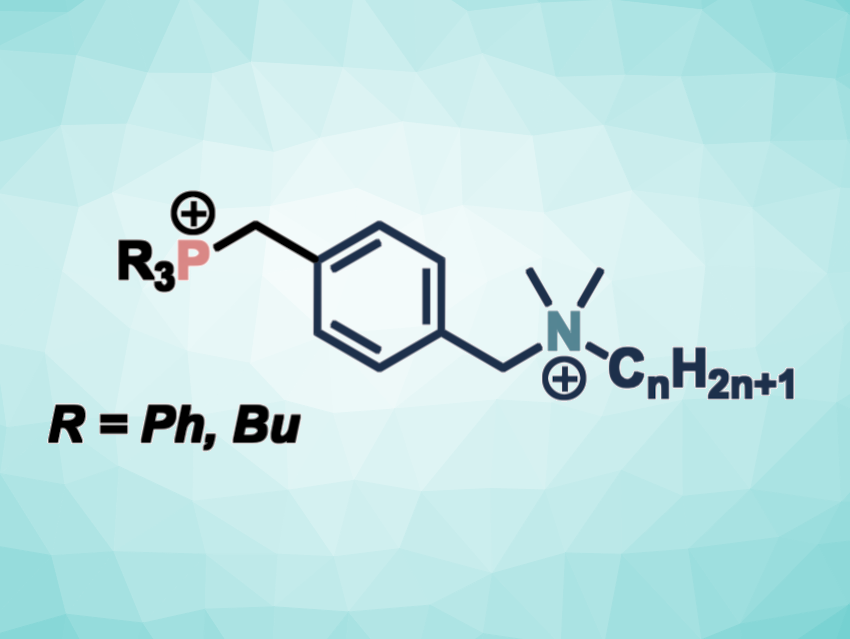While the threat of antibiotic-resistant bacteria is widely known, the rise of bacteria resistant to disinfectants—chemical agents that eradicate pathogens from surfaces—is generally less familiar. However, bacteria bearing one or more resistance mechanisms against disinfectants have emerged.
William M. Wuest, Emory University, Atlanta, GA, USA, Kevin P. C. Minbiole, Villanova University, PA, USA, and colleagues investigated the disinfectant properties of multicationic quaternary ammonium compounds and phosphorus analogs. The team has extended this work to chimeric disinfectants, bearing both an ammonium group and a phosphonium group to find new disinfectants for effective infection prevention. They synthesized a series of chimeric biscationic amphiphilic compounds, bearing both ammonium and phosphonium groups (general structure pictured).
The team first reacted α,α′-dichloro-p-xylene with an excess of either triphenylphosphine or tributylphosphine to obtain phosphonium-functionalized benzyl chloride intermediates. These intermediates were then reacted with dimethylalkyl amines with different chain lengths at elevated temperatures to obtain the desired chimeric biscationic amphiphiles.
The team evaluated the antibacterial activity of the synthesized compounds against a panel of seven bacterial strains, including two methicillin-resistant Staphylococcus aureus (MRSA) strains as well as the opportunistic pathogen Acinetobacter baumannii. The results were encouraging, with micromolar inhibitory activity being observed for multiple compounds. Overall, the work provides a set of phosphorus/nitrogen antimicrobials that possess unprecedented structures, low micromolar potency, and modest toxicity to eukaryotic cells.
- Chimeric Amphiphilic Disinfectants: Quaternary Ammonium / Quaternary Phosphonium Hybrid Structures,
Moneya S. Leatherbury, Laura Thierer, Christian A Sanchez, Germán Vargas-Cuebas, Ashley A Petersen, Lauren E Amoo, Elise L Bezold, Keshyne C Washington, M. Brody Mistrot, Michael J Zdilla, William M Wuest, Kevin P. C. Minbiole,
ChemMedChem 2024.
https://doi.org/10.1002/cmdc.202300718



